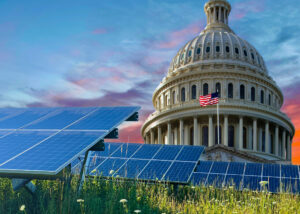
Transition to Renewable Energy
Renewable energy not only benefits the environment but can also be a smart financial decision for companies. As the cost of renewable energy continues to decrease, the advantages of switching to these sources only increase.
The use of fossil fuels like coal, oil, and natural gas for energy production can represent a significant portion of a company’s greenhouse gas emissions.
By transitioning to renewable energy sources – solar, wind, hydroelectric, and geothermal power – you can reduce your emissions and reduce costs over time. These energy sources are becoming increasingly cost-effective, with the cost of solar and wind power falling rapidly in recent years. Additionally, many governments offer incentives and financing options to help companies make the switch. Transitioning to renewable energy can also help your company become more energy-independent and reduce supply chain and market risk.
The following action steps provide more detail on transitioning to renewable energy sources.

